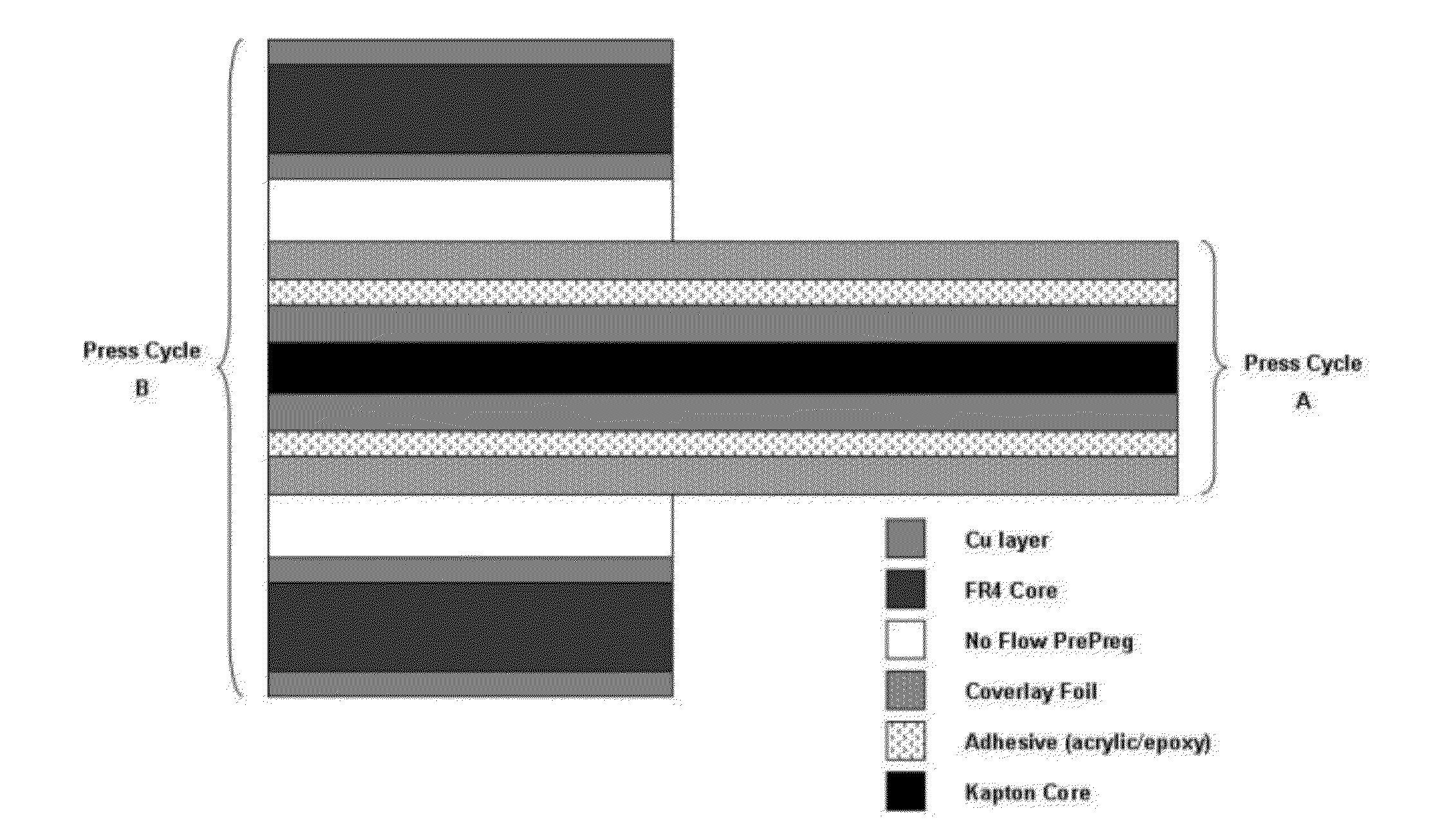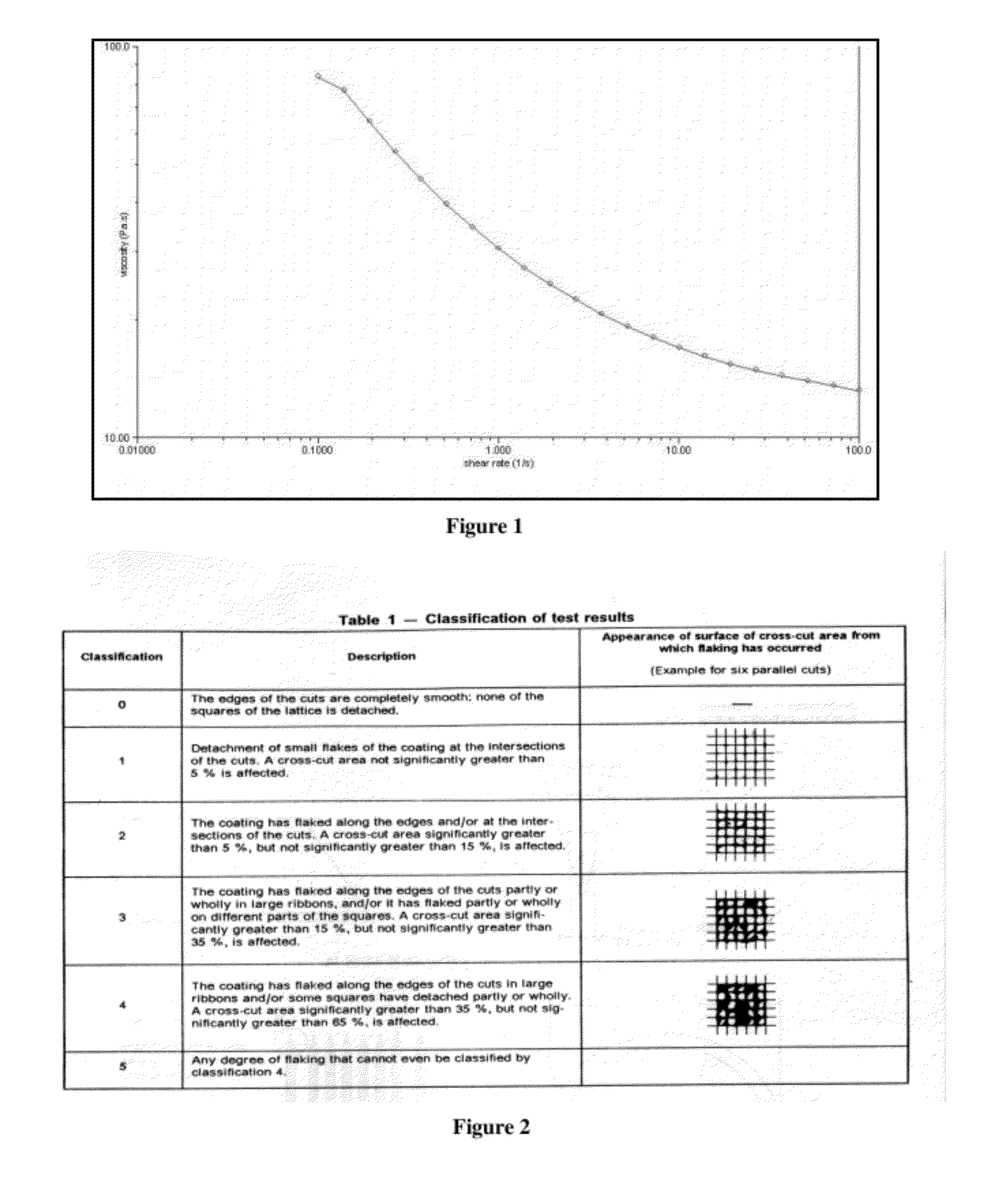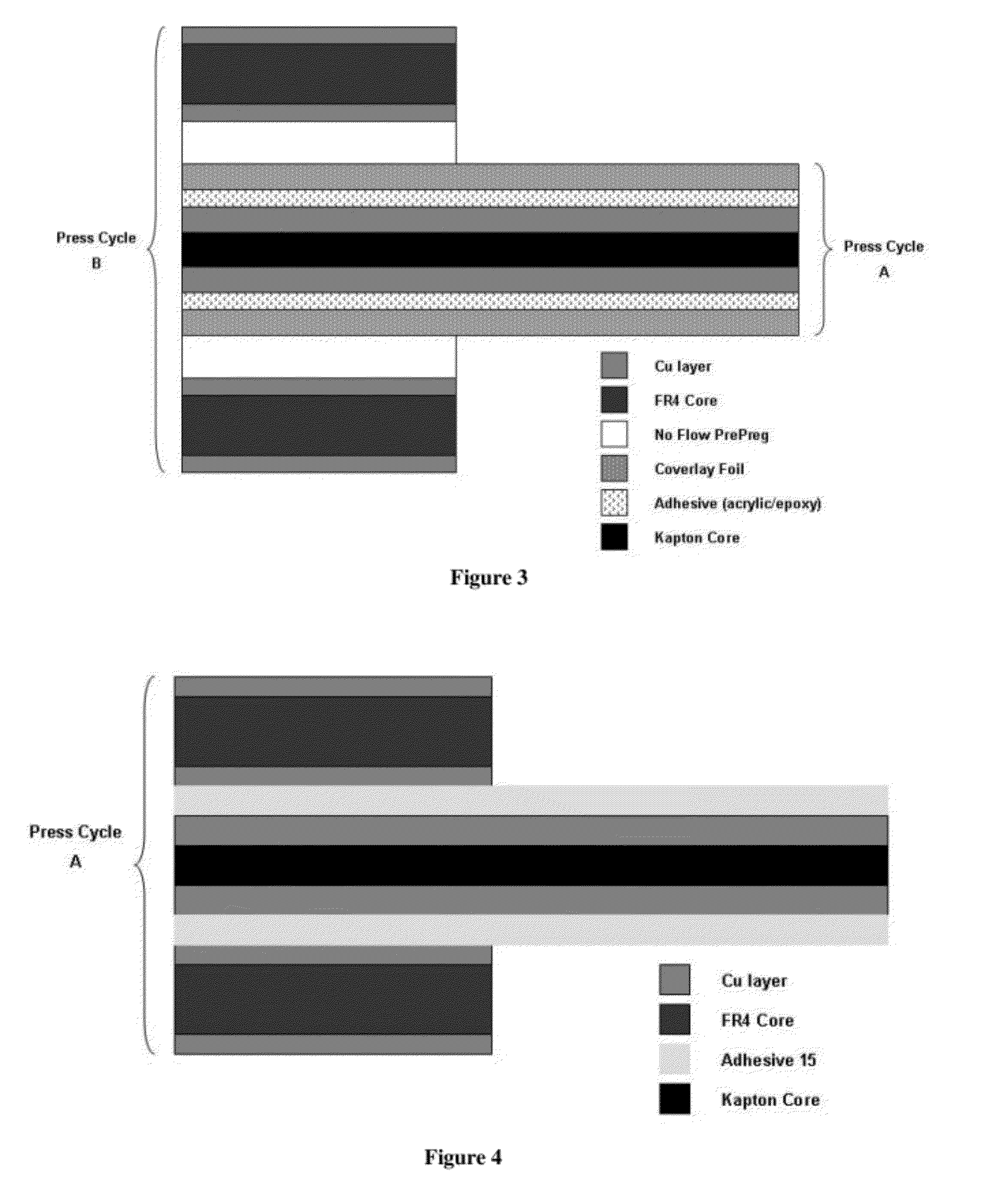Polyamideimide adhesives for printed circuit boards
a technology of polyamideimide and printed circuit boards, which is applied in the direction of adhesive types, polyurea/polyurethane adhesives, epoxy resin adhesives, etc., can solve the problems of high cost, material consumption (including wastage), and potential weak points of adhesion achieved using prepreg, and achieve excellent viscosity stability and outstanding solder resistance.
- Summary
- Abstract
- Description
- Claims
- Application Information
AI Technical Summary
Benefits of technology
Problems solved by technology
Method used
Image
Examples
example 1
Use of Temperature to Control Flow Properties of Liquid Polyamideimide Adhesive
[0213]Two Copper-clad FR4 PCB panels (A & B) were coated with 2 layers of Adhesive 15 15 using the following parameters:[0214]Screen Printing: 43T Polyester Mesh, 10 mm snap-off, 65 shore squeegee[0215]First Layer pre-dried at 80° C. for 30 minutes in a hot-air convection oven.[0216]Second layer applied and dried for 60 minutes at 80° C. (Panel A) and 120 ° C. (Panel B).[0217]Dry film thickness achieved using these parameters was 20 microns.
[0218]Two clear glass slides measuring 25.4×76.2×1.2 mm were then placed onto each panel as shown in FIGS. 5 (cross section) and 6 (view from above). Both Panels were then layed up with press pads and a release layer covering the surfaces. The panels were then laminated under vacuum using a Buhler press at a pressure of 25 Bar and temperature of 195° C. for 60 minutes. After cooling, the Panels were inspected for signs of the Adhesive 15 ‘flowing’ during the lamination...
example 2
Adhesion Test for Liquid Polyamideimide Adhesive using FR4, Copper and Glass
[0220]One panel of bare FR4 PCB laminate and one panel of copper-clad FR4 PCB laminate were coated with 2 layers of Adhesive 15 15using the following parameters:[0221]Screen Printing: 43T Polyester Mesh, 10 mm snap-off, 65 shore squeegee[0222]First Layer pre-dried at 80° C. for 30 minutes in a hot-air convection oven.[0223]Second layer applied and dried for 60 minutes at 120° C.[0224]Dry film thickness of 20 microns was achieved using these parameters.
[0225]Three clear glass slides measuring 25.4×76.2×1.2 mm were then placed onto the coated copper-clad FR4 PCB panel as shown in FIG. 9. The bare FR4 PCB Panel was then placed on top with the Adhesive 15Adhesive 15 coating between the glass and the FR4. This created a simple multilayer stack to give the following build-up layers: Copper / Adhesive 15 / Glass / Adhesive 15 / FR4. The multilayer stack was then layed up with press pads and a release layer covering the out...
example 3
Peel Strength Testing of Liquid Polyamideimide Adhesive Using Standard PCB Materials
[0227]The peel strength of Adhesive 15 was tested by laminating test strips of differing substrate materials (x), which are commonly used to produce multilayer PCBs, using Adhesive 15 as the adhesive to bond the particular layers together. All tests were performed using copper-clad FR4 as the starting base material. A reference sample was also prepared using standard dry-film prepreg material in between copper clad FR4 and bare FR4 laminate. Below is an outline of how each Adhesive 15 test sample was prepared:
[0228]A Copper-clad FR4 PCB panel was coated with 2 layers of Adhesive 15 using the following parameters:[0229]Screen Printing: 43T Polyester Mesh, 10 mm snap-off, 65 shore squeegee[0230]First Layer pre-dried at 80° C. for 30 minutes in a hot-air convection oven.[0231]Second layer applied and dried for 60 minutes at 80° C. or 60 minutes at 120° C.[0232]Dry film thickness of 20 microns was achiev...
PUM
| Property | Measurement | Unit |
|---|---|---|
| Temperature | aaaaa | aaaaa |
| Temperature | aaaaa | aaaaa |
| Temperature | aaaaa | aaaaa |
Abstract
Description
Claims
Application Information
 Login to View More
Login to View More - R&D
- Intellectual Property
- Life Sciences
- Materials
- Tech Scout
- Unparalleled Data Quality
- Higher Quality Content
- 60% Fewer Hallucinations
Browse by: Latest US Patents, China's latest patents, Technical Efficacy Thesaurus, Application Domain, Technology Topic, Popular Technical Reports.
© 2025 PatSnap. All rights reserved.Legal|Privacy policy|Modern Slavery Act Transparency Statement|Sitemap|About US| Contact US: help@patsnap.com



